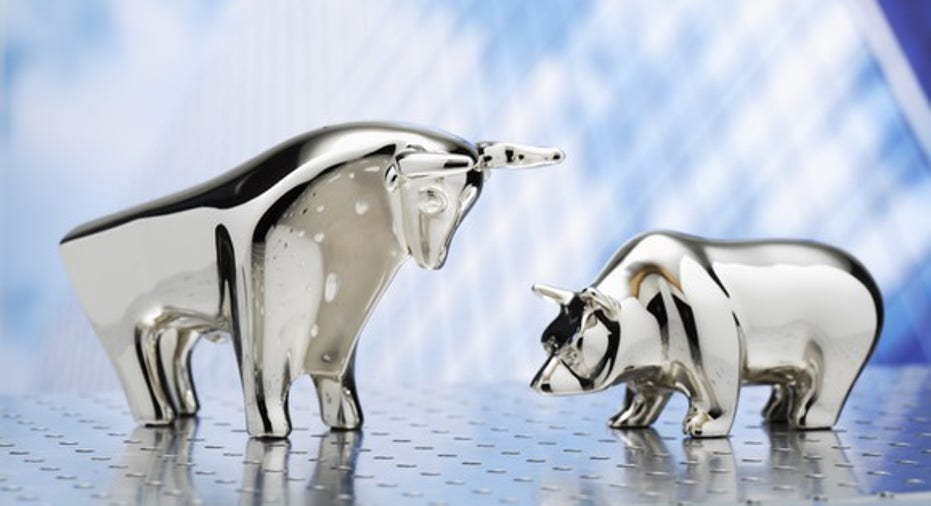Common Stock vs. Preferred Stock

When a business wants to raise money by attracting investors, it can do so by issuing stock in one of two flavors: common stock or preferred stock. Both types of stock are offered for sale on the various stock exchanges. Ticker symbols for preferred stocks usually (but not always) have a P at the end, depending on which stock market ticker you're looking at.
Both common stock and preferred stock are worthwhile investments, but depending on your needs, one class of stock may be a better choice for you than the other. Understanding what each of the stock classes has to offer can allow you to choose the one that has the best chance of fulfilling your highest priorities.
What is common stock?
Common stock is what most people think of when they think "stock." Common stock allows its holders to make a profit through rising share prices and dividend payments. Holders of common stock also get to vote on corporate issues, such as electing new directors to the corporation's board. However, should the company end up in bankruptcy, holders of common stock are last on the list to get their money back -- after regular creditors, bondholders, and holders of preferred stock. If you hold common stock and the company goes bust, you are unlikely to get any of your capital back.
What is preferred stock?
Preferred stock also represents owning a share of the company, but it works a bit differently than common stock. Preferred stock pays a predetermined dividend, whereas the dividends paid to common shareholders tend to vary according to the company's fortunes. Dividends on preferred stock are often larger than those on either common stock or the company's bonds. Holders of preferred stock do not get a vote on company matters. And if a company's assets are liquidated, the preferred stockholders get to redeem their shares before common stockholders do, giving them a better chance of getting at least some of their money back.
Image source: Getty Images.
Benefits and drawbacks
Preferred stock generally pays a higher dividend than common stock, but in certain circumstances this can change. Because preferred stock dividends are set at the time the stock is issued, if the company should decide to issue a larger dividend than it originally planned, the dividends on common stock will go up (and can rise above those for preferred stock), but the dividends on preferred stock will not.
In some ways, preferred stock is like a cross between a bond and common stock. Preferred stockholders get some of the best of both types of investments, but they also get the drawbacks. Preferred stock is typically far more volatile than a bond -- in fact, it can be nearly as volatile as common stock, though its fixed dividends lend it a bit more stability. And shares of preferred stock, like bonds, are sometimes callable, meaning that the corporation has the right to buy back those shares at a set price any time it chooses.
The voting rights that holders of common stock enjoy are generally of little benefit unless you own a significant percentage of the company's stock. While the dividends are typically lower than those paid by preferred stock shares, the value of common stock tends to rise more quickly than the value of preferred stock when the company thrives (and fall faster when the company runs into trouble).
Which is better?
For most investors, common stock is a better deal. It's slightly riskier than preferred stock, but will usually show a slightly higher return as well. If you want to enjoy the potentially high returns of a stock investment butwant to minimize your investment's volatility or your exposure to company-specific risk, preferred stock might be a better choice. Preferred stock may also be better if you're looking for a source of income you can depend on, as the dividends paid on such stock are fixed. But whichever class of stock you choose, be sure that it's an investment you'll feel comfortable holding over the long haul.
10 stocks we like better thanWal-MartWhen investing geniuses David and TomGardner have a stock tip, it can pay to listen. After all, the newsletter theyhave run for over a decade, the Motley Fool Stock Advisor, has tripled the market.*
David and Tomjust revealed what they believe are theten best stocksfor investors to buy right now and Wal-Mart wasn't one of them! That's right -- theythink these 10 stocks are even better buys.
Click hereto learn about these picks!
*StockAdvisor returns as of April 3, 2017The author(s) may have a position in any stocks mentioned.
The Motley Fool has a disclosure policy.